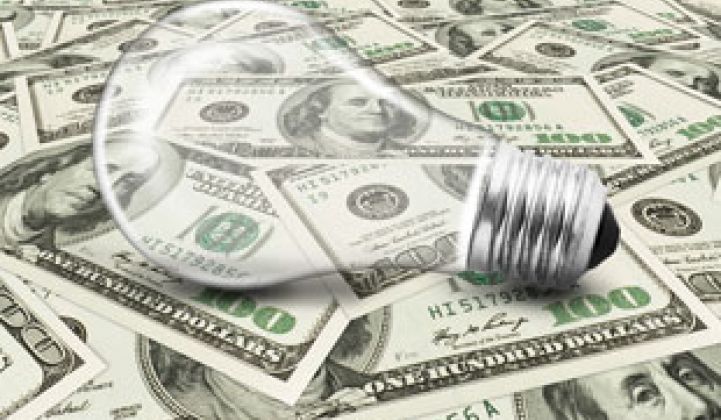For the past two years, New York has been building a portfolio that could eventually lure hundreds of millions of private dollars to clean-energy projects through its Green Bank.
It began with $165 million in financing that would be matched by private capital, with the goal of scaling up to $1 billion.
The $1 billion figure is still far off. But the Green Bank did just put up $49 million and leveraged more than $170 million to fund three more transactions. The institution says it has proposals for more than $850 million in Green Bank capital.
The goal of the Green Bank is to catalyze and animate markets where they currently do not exist.
About half of the money, however, is going to Level Solar, a New York-based solar provider that installs systems at no upfront cost. The residential market is already strong in New York, so it's curious that so much money is being deployed to a sector that is nearing maturity.
Not only is the Green Bank still supporting residential solar, but the state recently extended solar loans as part of its Green Jobs -- Green New York program. Last year, the program offered nearly $20 million in loans at interest rates below 4 percent.
The extension was a last-minute addition to budget deals in Albany, even though the program administrator, NYSERDA, was ready to let the private market take over.
NYSERDA is interested in boosting low-income markets, so it is possible that the state money, from the loans and Green Bank, could be earmarked for that purpose. Level Solar, however, does not focus exclusively on the low-income market.
Why deploy funds to markets that already have financial backing from private investors? One reason could be the timeline for New York’s Reforming the Energy Vision (REV) proceeding.
If regulators are going to accomplish the full promise of REV, which involves eliminating energy peaks and enabling an energy market at the distribution level, the private market will need to scale much faster. The Green Bank can put money into those markets to help push the process along and meet the goals established by REV.
That seems to be what the Green Bank is doing in efficiency. To help explore what a more market-based approach might look like, the Green Bank just provided $20 million to Renew Financial to expand its consumer-lending program. Green Bank and Citi previously announced $100 million in funds going to Renew Financial, and this investment, which includes $50 million from Citi, is part of that.
If the loans continue to perform well, the goal is to eventually let the private market provide the financing without the support of the Green Bank.
The last $4 million from the Green Bank went to United Wind, which provides distributed wind solutions in upstate and central New York under a leasing structure. The Brooklyn-based company closed about 17 deals in its first year.
There are other investments the Green Bank could make to further align distributed energy markets with the goals of REV. Those include funding for REV demonstration projects and money for microgrids that are currently competing for the NY Prize.
Listen to New York Energy Czar Richard Kauffman describe how the state is attempting to animate distributed energy markets on the Energy Gang:



